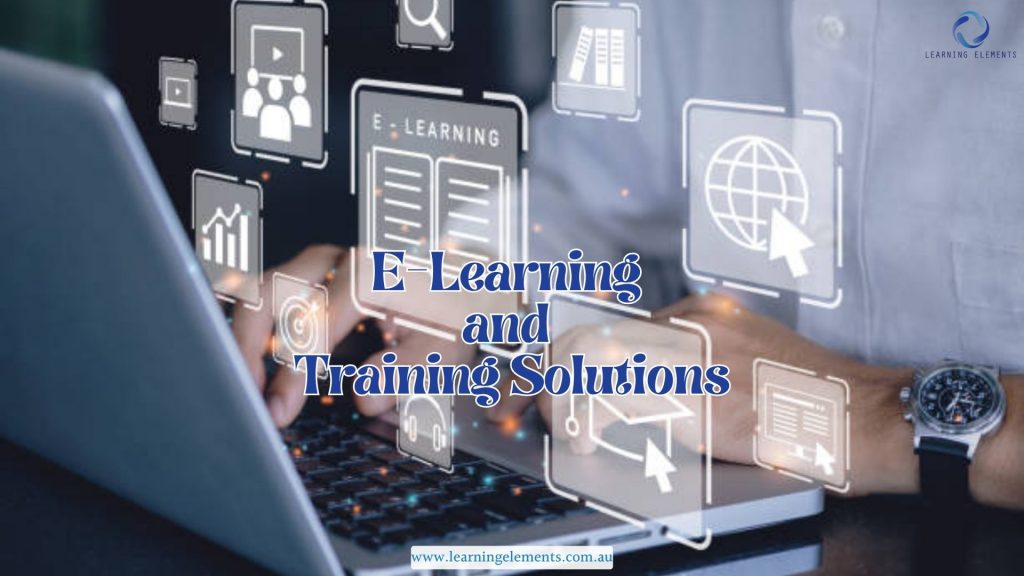Workplace Training: Types and Benefits
Training in the workplace is crucial for maintaining a productive and efficient workforce. It plays a vital role in developing employee skills, boosting morale, promoting a positive work culture, and increasing job satisfaction. In today’s fast-paced and competitive business landscape, organisations recognise the power of training to help individuals acquire new skills, knowledge, and behaviours. As a powerful tool, training facilitates knowledge transfer from instructors or trainers to learners in a structured environment.
Workplace training offers numerous advantages in traditional classrooms or through modern technology solutions like online courses and virtual classrooms. These advantages include increased engagement levels through interactive elements, enhanced safety measures, reduced travel costs, and time savings due to faster delivery times. Organisations can create customised training programs that align with their specific needs or unique development goals by leveraging various instructional approaches.
In this article, we will delve into the different elements of workplace training and explore how they contribute to individual and organisational success. Additionally, we will share how Learning Elements can help you. We’ll design or customise top-notch training courses to empower you on your journey to success! Also, with our expert team, you can enhance your learning experience and help you achieve your personal and professional goals.
Benefits of Workplace Training
–Cost-effectiveness:
Training courses can yield long-term cost savings for businesses that invest in them. Businesses can reduce turnover rates and increase employee retention by allowing employees to develop their skills and knowledge. When employees feel invested in and supported through training, they are more likely to stay with the company, reducing the costs associated with recruiting, onboarding, and training new hires. Moreover, well-trained employees tend to be more productive and efficient, improving overall productivity and ultimately contributing to cost-effectiveness.
–Personal development and career growth:
Training offers employees valuable opportunities for personal growth and career advancement. By acquiring new skills and knowledge through training, employees can expand their capabilities and become more proficient in their roles. This, in turn, increases their chances of being considered for promotions, salary increases, and expanded job responsibilities. Training benefits both the organisation and individuals by empowering them to achieve their career goals and fulfill their potential.
–Return on investment (ROI):
Organisations that invest in training programs often see measurable improvements in key performance indicators (KPIs). Improved employee skills and knowledge contribute to revenue growth by enabling employees to provide better customer service, deliver higher-quality products or services, and make more informed decisions. Workplace training also enhances customer satisfaction, increasing loyalty and repeat business. Furthermore, investing in training improves employee engagement, boosting productivity and reducing turnover costs.
–Blended learning approach:
The blended learning approach combines the advantages of online training courses with in-person workshops or mentoring, creating a comprehensive and effective learning experience. This approach offers flexibility, allowing employees to access training materials conveniently. The personalised learning experiences cater to individual learning styles and preferences, promoting better engagement and knowledge retention. In-person workshops or mentoring provide valuable opportunities for hands-on practice, immediate feedback, and collaboration with peers. The blended learning approach combines the benefits of online and in-person learning, creating a rich and interactive training experience that maximises learning outcomes.
–Continuous learning and upskilling:
In today’s rapidly changing work environment, continuous learning and upskilling are vital for employees to remain relevant and adaptable. Training courses enable employees to acquire new knowledge and skills that align with evolving industry trends, technological advancements, and changing job requirements. By fostering a culture of continuous learning, organisations empower their employees to embrace innovation, take on new challenges, and contribute to the company’s success. Continuous learning and upskilling also demonstrate a commitment to employee development, enhancing employee satisfaction and loyalty.
–Employee engagement and motivation:
Training plays a significant role in employee engagement and motivation. When organisations invest in employee development through training programs, they show a genuine interest in their employees’ growth and success. Workplace training provides opportunities for employees to expand their skills, take on new responsibilities, and advance their careers. This creates a sense of fulfillment and motivation, leading to higher job satisfaction, improved morale, and increased employee happiness. Engaged and motivated employees are more likely to demonstrate higher levels of productivity, innovation, and commitment to the organisation’s goals.
–Accessibility and inclusivity:
Training programs should be accessible and inclusive to cater to the diverse needs of all employees, including those with disabilities or diverse learning styles. Organisations should leverage technology to provide accessible training materials, such as screen readers for visually impaired individuals or closed captions for those with hearing impairments. Adaptive learning strategies, such as customised learning paths or additional support resources, can accommodate different learning styles and paces. Inclusive design principles should be applied when developing training content to ensure it is usable and understandable by everyone. By prioritising accessibility and inclusivity, organisations create an inclusive learning environment that values and supports every employee.
Types of Training in the Workplace
Leadership Training
Leadership training is essential for any organisation to create and establish a culture of consistent high performance and help leaders evolve to meet the changing requirements of their roles. Organisations can provide leadership development opportunities that are accessible anytime and anywhere by utilising online learning tools. Leaders can access courses covering expertise topics such as communication, conflict resolution skills, and team-building activities.
Benefits of Leadership Training:
Effective leadership training is fundamental in cultivating an organisation’s high-performance culture. It enhances communication, problem-solving, and coaching skills and promotes organisational effectiveness by fostering collaboration, trust, productivity, and morale.
By participating in leadership training, individuals can become better communicators, critical thinkers, coaches, and problem solvers. This can help them take on greater responsibility within their team or organisation. They gain a comprehensive understanding of leadership concepts and practices, enabling them to cultivate strategic visions and deliver effective feedback. Leadership training equips individuals with valuable conflict management techniques, ensuring they can handle disputes and challenges adeptly. Furthermore, leadership training also increases organisational effectiveness by creating a culture of collaboration and trust – resulting in increased productivity and improved morale.
· In-Depth Understanding of Leadership Concepts and Practices:
By taking an in-depth look at leadership concepts and practices, organisations can better understand the features and characteristics required for top-level performance. It helps develop skills such as goal setting, effective planning, inspiring others, responsible decision-making, and delegating tasks appropriately. It also offers insights into creating an environment that promotes creativity, innovation, and collaboration.
· Developing a Strategic Vision:
Leadership training also helps to develop a strategic vision for the organisation. Leaders can create effective strategies for future growth and development by understanding the business environment and exploring potential opportunities. Workplace training enables leaders to identify potential problems early on, develop plans to address them and ensure efficient resource utilisation.
· Delivering Effective Feedback Constructively:
Leadership training helps to develop effective feedback skills. This is essential for creating a thriving working environment that encourages high levels of performance and engagement and promotes collaboration. Leaders learn how to provide constructive criticism in a way that motivates employees and inspires them to achieve their goals.
· Enhancing Communication Skills for Leaders:
Leadership training also helps to enhance communication skills by teaching leaders how to communicate effectively with employees and other stakeholders. This includes developing listening skills, using non-verbal language and cues, understanding individual needs and preferences, and delivering clear messages. Effective communication is crucial for effective leadership.
· Utilising Conflict Management Techniques:
Leadership training also teaches managers to use conflict management techniques to resolve issues quickly and efficiently. This helps create a working environment built on mutual respect and trust, which leads to improved communication, collaboration, and problem-solving skills.

What is E–Learning?
Electronic Learning, or eLearning, uses digital technologies to deliver learning content via the Internet. It offers many advantages, including increased engagement through interactive elements, improved safety, reduced costs due to minimised travel requirements, and time-saving due to faster delivery.
eLearning is a powerful tool that can be used to create customised learning experiences. Organisations of all sizes are leveraging digital learning solutions to quickly equip employees with the skills they need to succeed in a constantly changing world. With interactive video courses and virtual classrooms, organisations can access greater flexibility when creating their workers’ customised training programs that meet their unique development goals.
Digital learning technology is revolutionising the way companies train and develop their employees. Training and other learning content strategy and-learning solutions enable leaders to quickly equip employees with the skills they need to succeed in a constantly evolving workplace.
From corporate training, soft skills development, diversity and inclusion training, and change management training to customer service training, organisations leverage digital platforms and learning methods to quickly and effectively develop their workforce.
Technology and Digitalisation Training:
Digital technology is transforming industries and workplaces. As businesses move towards automation and digital processes, employees must develop the skills to manage and operate new technologies. Learning Elements can help you design interactive courses!
· Digital transformation:
Digital transformation is an essential part of any organisation’s success. By leveraging digital or eLearning solutions, companies can quickly equip their employees with the skills they need to support their transition into a modern workplace. Digital learning technology enables organisations to deploy tailored training programs and online courses that help employees develop the skills they need to succeed in today’s digital-first environment.

Comfortable Selling and Leading Training:
Comfortable Selling and Leading Training equips individuals with the skills and confidence to excel in sales and leadership roles. This training program emphasises the importance of effective communication, persuasive techniques, and relationship-building strategies to drive sales success.
As part of The Comfortable Training series, Learning Elements offer Comfortable Selling and Comfortable Leading programs. Comfortable Selling and Leading training equip you with the essential skills necessary to engage in confident and productive conversations that yield desired outcomes. Learning Elements programs can assist in developing sales and leadership skills and also take your career and business to the next level!
Through interactive exercises and real-world examples, participants develop the necessary skills to become influential salespeople and effective leaders, positively impacting both their personal growth and the overall success of their organisations. Enrol now!
Corporate Training:
Companies invest in corporate training to enhance workforce performance. Online and in-person training options enable companies to quickly train personnel with minimal disruption and scale up or down, depending on the company’s needs. Digital education platforms and virtual classrooms offer personalised and convenient training and learning solutions. It provides employees access to the latest training materials when they need it most.

Soft Skills vs. Hard Skills Training:
In the workplace, expertise encompasses both soft and hard skills, each playing a crucial role in individual and team performance. While hard skills are specific to job functions and can be acquired through specialised training, soft skills are equally vital and should not be overlooked.
Soft skills, such as customer service, problem-solving, and critical thinking, are essential for employees to excel in their roles. These skills encompass social and behavioural abilities that determine how effectively individuals navigate interpersonal relationships and handle various situations.
When combined, soft and hard skills represent a comprehensive set of talents that make employees invaluable team members, contributing to overall success.
Diversity and Inclusion Training:
Diversity and inclusion training are crucial to any company’s development program. Organisations foster an environment where employees feel welcome and respected by creating a culture of acceptance. Digital learning solutions or eLearning delivers interactive courses covering language, literacy, cultural awareness, and understanding different perspectives.
These resources are just some ways organisations use training and e-learning solutions to support and foster an environment of growth and professional development. With the right tools and resources, companies can ensure their employees have the relevant skills to excel in a constantly evolving workplace.
Change Management Training:
Change management is an integral part of any organisation’s growth and development. Training employees in change management prepares them for the challenges of adapting to new processes and technologies. Digital and mobile learning solutions deliver dynamic, interactive courses on organisational transformation and process improvement. The eLearning also helps employees develop the skills they need to adjust to change quickly and effectively.
Customer Service Training:
Providing exceptional customer experiences is vital for any business. Organisations can use training and eLearning solutions to deliver interactive communication, understand customer needs, and handle customer conflicts and disputes. This helps them develop the skills to interact with customers professionally and courteously.
· Improving Communication Skills:
Effective customer service requires strong communication skills. Training can help employees develop the ability to effectively listen, speak, and write to better provide accurate and helpful information to customers. This includes learning techniques such as using active listening and developing empathy for customers.
· Understanding Customer Needs:
Customer service training can also help employees to understand customer needs and expectations. This includes developing the skills they need to identify customer needs, address customer concerns promptly, and provide solutions that meet customers’ needs.
· Conflict Resolution:
In addition to understanding customer needs, training can help employees develop the skills they need to handle customer conflicts and disputes. This includes developing strategies for managing demanding customers, respectfully resolving conflicts, and using effective communication techniques to defuse tension.
Conclusion
Workplace training is a vital investment that benefits employers and employees. It enables organisations to achieve their development goals by offering various types of training. Companies should prioritise investing in e-learning and workplace training solutions to support employee growth and professional development. This will ensure competitiveness in evolving business environments and fostering long-term success.
Training is a powerful tool for developing new skills, knowledge, and behaviours in individuals. It involves transferring knowledge from instructors or trainers to learners in a structured environment. By combining traditional classroom instruction with modern technology solutions like online training courses and virtual classrooms, organisations gain flexibility in creating customised training programs that align with their unique development goals. Leadership, corporate, and customer service training are examples of the diverse training options available to organisations. Training provides numerous benefits, including improved communication, problem-solving, and collaboration skills, which enhance productivity and morale. Investing in training creates a culture of continuous learning and development, driving individual and organisational growth.
Why choose Learning Elements?
At Learning Elements, we understand the significance of training in unlocking individual potential and achieving organisational excellence. Our exceptional training courses empower individuals on their path to success. Enrol in our transformative courses to seize new opportunities and acquire the skills needed to thrive in today’s dynamic business environment. Discover the transformative power of Learning Elements training courses and embark on a journey of continuous growth and professional advancement.
Learning Elements Training Design on Demand:
In addition to our existing training courses, we also offer customised training design services. If your business has specific training needs or requires a tailored program, our instructional designers can work closely with you to develop a training solution that aligns with your goals, objectives, and industry requirements. Our training design on-demand service ensures that your company receives a unique and effective learning experience tailored to your specific needs.
By availing of our training courses or requesting a training design on demand, you can equip your personnel with the necessary skills, knowledge, and behaviours to succeed in today’s dynamic and competitive business environment. Invest in training and empower your workforce to achieve their full potential while driving organisational growth and success!
Check out our Training Courses and Book a Call Now!







